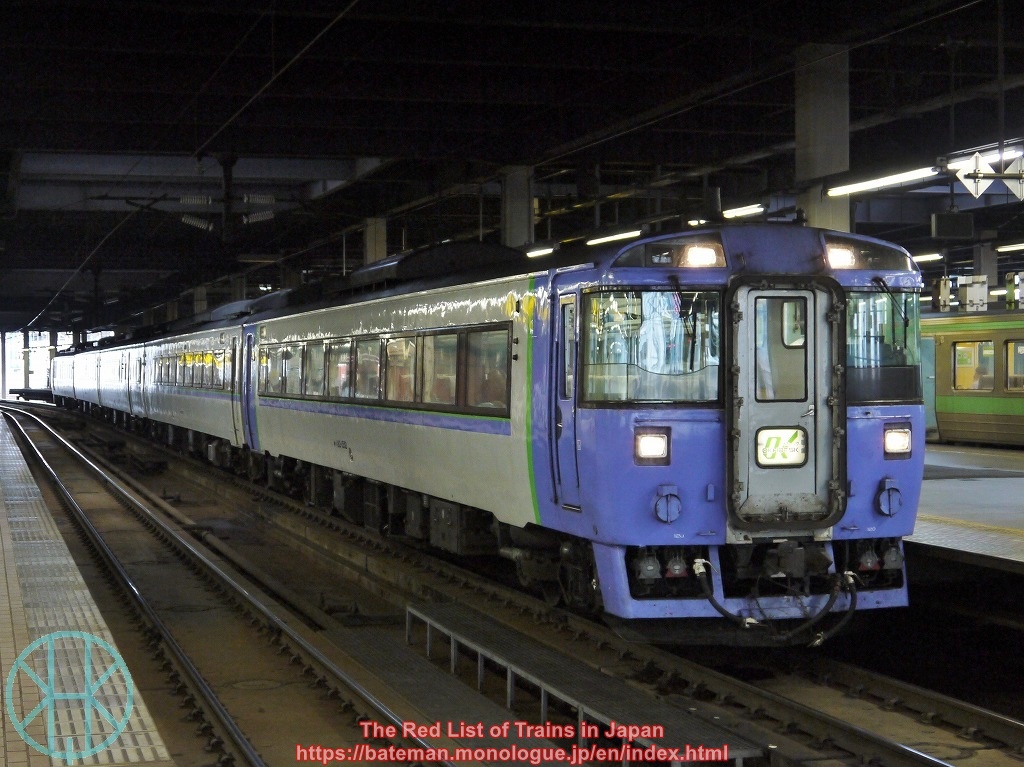JNR KiHa 183 series

Data (as of 29 Jul 2023)
| Status: | Extinct |
| (JR Hokkaido) | |
| Data Deficient | |
| (JR Kyushu) | |
| Constructed in: | 1979-92 |
| Number built: | 185 |
| Registered: | 4 |
History
This article is about KiHa 183 series (diesel). Do not be confused with 183 series (electric).
The KiHa 183 series was developed by Japanese National Railways for limited express services in Hokkaido. JNR did not intend to make duration of services shorter but to replace obsolete KiHa 80 series DMUs, and thus the maximum speed of the KiHa 183 series was just 100 km/h (62 mph) at first. It was first introduced to Limited Express Ōzora (Hakodate - Kushiro via Sapporo) formed of ten coaches, but the KiHa 183 series had no dining car unlike other limited express. In 1986, JNR changed the design and called them N183 series, and JR Hokkaido ordered more carriages that can run at a speed of 120 km/h (75 mph). Those introduced by JR Hokkaido were called NN183 series.
JR Hokkaido also introduced some "Resort Units" for group tours. There were Crystal Express TOMAMU & SAHORO, Niseko Express and North Rainbow Express. Asahiyama Zoo Train was converted from standard KiHa 183 series coaches and designed specifically for children. The company also converted some other standard carriages to de facto Joyful Trains with tatami rooms.
Withdrawal commenced in 2001, but JR Hokkaido retained considerable number of carriages for more than 20 years due to lack of funding and train shortages. Since 2011, the KiHa 183 series had suffered from technical troubles due to overuse and poor maintenance. All carriages including the Resort Units were withdrawn by 2023.
JR Kyushu introduced a four-car unit in 1988-89, based on the N183 series but look different. It was specifically designed for tourists going to Nagasaki Holland Village (now Huis Ten Bosch). Though being a diesel train, it could couple with 485 series EMUs. It was later converted many times as it was reallocated to many other places. The last refurbishment was taken place in 2011 when it was designated for Aso Boy (Kumamoto - Beppu).
Some of those in Hokkaido were exported to Thailand and Sierra Leone.
Current Operations & Future Prospects
JR Kyushu uses the KiHa 183 series for Aso Boy at weekends and on holidays. No plan of withdrawal is announced so far, but it is difficult to predict when it will retire, as there is only one unit.
Photos

Asahiyama Zoo Train before refurbishment in 2013.

Asahiyama Zoo Train after refurbishment, withdrawn in 2018.

The NN183 series looks similar to the N183 series.

